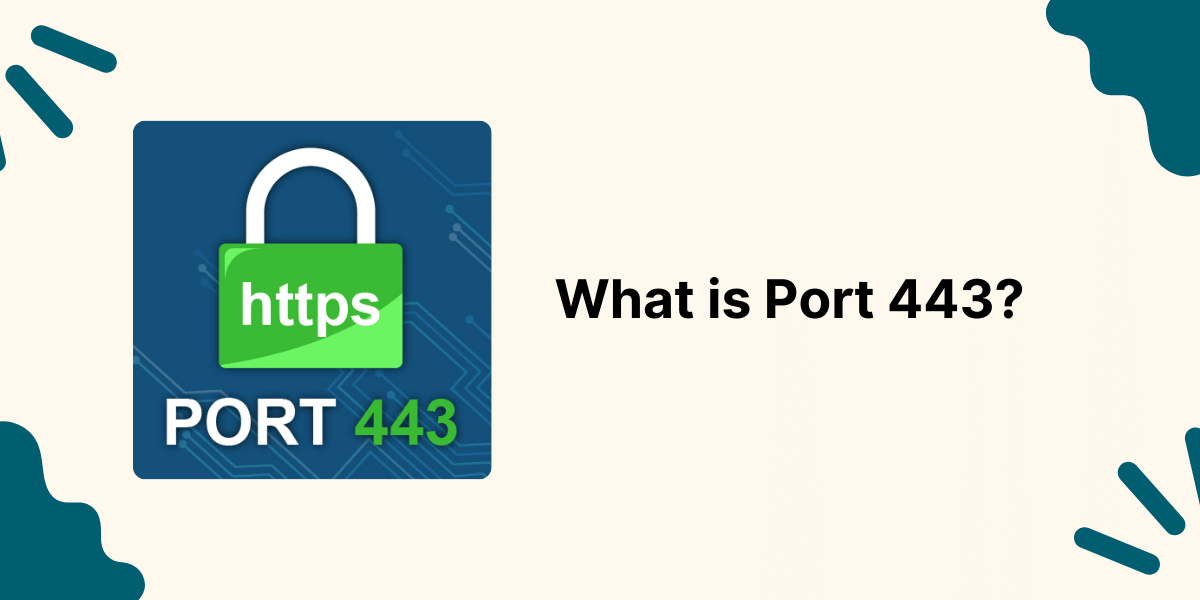Getting Started with Certificate Transparency
Certificate Transparency (CT) is an open framework for monitoring and auditing digital certificates. It operates by creating a public log of TLS/SSL certificates issued by certificate authorities. This allows individuals and organizations to detect certificates that have been mistakenly or maliciously issued.
CT helps improve the overall security and trustworthiness of SSL/TLS certificates. It works by making the issuance process more transparent and enabling people to detect certificates that should not have been issued. Some key benefits of Certificate Transparency include:
Key Takeaways
- Certificate Transparency creates publicly auditable logs of SSL/TLS certificates. This helps detect mistakenly or maliciously issued certificates.
- CT logs allow domain owners and certificate authorities to monitor how their domains and brands are being used. They can identify rogue or fraudulent certificates.
- CT provides a framework to detect certificate authorities that improperly issue certificates. It deters certificate mis issuance.
- Major browsers like Chrome and Firefox require CT to ensure the certificates they trust are properly issued and logged.
- CT is an open standard that is easy to implement. Certificate authorities and website owners can easily adopt it to improve SSL/TLS certificate security.
How Does Certificate Transparency Work?
The core idea behind Certificate Transparency is simple – create public logs that record all issued SSL/TLS certificates. This allows improper certificates to be detected by auditing the logs.
There are a few key steps to how CT operates:
- Certificate Authorities Log Certificates: CAs submit every certificate they issue to CT logs. The logs cryptographically verify and record these certificates.
- Logs Publish Cryptographic Proofs: The logs publish cryptographic proofs that demonstrate each certificate has been added correctly.
- Auditors Monitor Logs: Independent auditors frequently scan the public CT logs to ensure the certificates have been issued properly.
- Domain Owners Monitor Logs: Owners of domains can also monitor the logs to watch for improper issuance of their domains.
- Browsers Require CT: Major browsers like Chrome require CT to ensure the certificates they trust have been properly logged and audited.
Key Elements of Certificate Transparency
There are a few key elements that make the Certificate Transparency framework work:
- CT Logs: These are public append-only logs that record all issued certificates. Logs cryptographically verify certificates before recording them. There are many independent CT log servers run by various organizations.
- Certificate Authorities: CAs are required to submit all issued certificates to CT logs. The logs provide cryptographic proof that certs were logged properly.
- Auditors: Trusted independent auditors frequently scan CT logs to identify any improper certificates. Audits ensure the logs are operating correctly.
- Domain Owners: Owners of domains can monitor CT logs to watch for mistaken issuance of their domains. This helps detect cases of mistaken issuance or domain impersonation.
- Browsers: Major browsers like Chrome require CT as part of determining certificate validity. They will distrust certificates that are not properly logged via CT.
Why is Certificate Transparency Needed?
Certificate Transparency was created to address a major weakness in the SSL certificate system: the lack of visibility into how certificates are issued.
Without CT, a compromised or malicious certificate authority could improperly issue certificates without anyone knowing. This could enable attacks through mis issued certificates.
Some examples of risks that CT protects against:
- Fraudulent certificates: A rogue employee at a CA could issue a cert for a domain they don’t control, enabling impersonation or interception.
- Domain impersonation: An attacker could obtain a certificate for a domain they don’t own, like google.com. This allows interception or phishing.
- Hidden certificate authorities: A new CA could begin operating without any public knowledge or oversight. This enables them to issue any certs they want.
By requiring transparency into all cert issuances via public logs, these types of attacks are no longer possible. Audit logs create accountability for CAs.
Certificate Transparency makes the issuance process public knowledge. This deters CAs from misissuing certificates, since they know auditors are watching. It also enables quicker detection and revocation of any improper certificates.
How Are Certificate Transparency Logs Implemented?
The infrastructure for enabling Certificate Transparency consists of publicly auditable logs run by various organizations. There are two main types of CT logs:
1. Certificate Logs
Certificate logs are the primary CT logs. They record details about each certificate issued, including:
- The certificate contents
- Information about the issuing CA
- A timestamp
- A cryptographic proof that the log entry is valid
Multiple certificate logs are operated by various organizations like Google, DigiCert, and Symantec. Browsers recognize these public logs as valid sources.
2. Monitor Logs
Monitor logs do not directly record certificates. Instead, they monitor the existing certificate logs to check for suspicious patterns or improperly issued certificates.
Monitor logs provide oversight into the certificate logs. They help ensure the certificate logs are operating correctly and catch all certificates.
The public nature of these logs is core to Certificate Transparency’s security. All logs are append-only, cryptographically assured, and frequently audited. This prevents logs from being tampered with or forged.
Key Properties of CT Logs
CT logs have some important properties that ensure transparency:
- Publicly auditable: Anyone can monitor or audit the logs. This allows broad oversight.
- Tamper evident: It is cryptographically impossible to remove or alter logged certificates without detection. Logs use Merkle trees and hashes.
- Signed certificates: All submitted certificates are signed by the issuing CA. The signature can be verified by the log.
- Append only: Logs can only add new certificates. Existing certificates cannot be modified or removed.
- Multiple logs: Numerous logs are run by various organizations to prevent centralized control. Logs cross-check each other.
How Do Browsers Enforce Certificate Transparency?
For Certificate Transparency to be effective, major browsers enforce that all trusted certificates comply with CT guidelines.
Google Chrome led the push for requiring CT starting in 2015. Here is how browser CT enforcement generally works:
- Browsers maintain a list of trusted CT logs that they recognize. These are logs that have agreed to adhere to Chrome’s CT policy.
- During SSL/TLS handshakes, the browser checks that the site’s certificate has been properly logged in a recognized CT log.
- The browser may also check that the log has issued a valid cryptographic proof for the certificate. Proofs demonstrate the cert was logged appropriately.
- If the certificate does not have CT log proof, the browser will show an error or warning.
- For Extended Validation (EV) certs, browsers require the certificate to appear in at least 2 different CT logs for increased redundancy.
This CT enforcement means that certificate authorities must submit all valid certificates to CT logs. Otherwise, browsers will not trust those certificates.
Browser CT policies incentivize CAs to properly log all issued certs. It makes CT ubiquitous across the web’s certificate infrastructure.
Implementing Certificate Transparency as a Certificate Authority
For certificate authorities (CAs), implementing Certificate Transparency involves:
- Submitting certificates to logs: CAs configure their systems to automatically submit newly issued certs to CT logs. APIs and clients provided by the logs make this simple to integrate.
- Adding CT proofs to certs: CAs add CT proof extensions to certificates that demonstrate the cert was logged. This allows browsers to verify CT compliance.
- Supporting audit requests: CAs build systems to handle log requests and audits. This helps logs verify submitted certificates.
- Updating certificate revocation: If a logged certificate is revoked, CAs notify the appropriate CT logs. The logs record the revocation status.
- Tuning for performance: Large CAs optimize their systems for submitting cert volumes to accommodate CT at scale. This involves load balancing, caching, and log optimization.
- Complying with policies: CAs ensure compliance with the Chrome CT policy and other browser guidelines. These guarantees browsers will trust their certificates.
Adopting Certificate Transparency provides assurance to CAs, browsers, and users that all issued certificates are valid and trusted. The public logs create accountability and prevent bad certs.
Implementing Certificate Transparency As a Website Owner
For organizations and individuals that operate websites, implementing Certificate Transparency involves:
- Monitoring CT logs: Check CT logs periodically for certificates issued for your domains. Watch for unexpected or unknown certificates.
- Setting up notifications: Use CT monitoring services to automatically notify you when new certificates are detected for your domains.
- Revoking fraudulent certificates: If a fraudulent certificate is detected, work with your CA to investigate and revoke the certificate.
- Verifying your certificates: When you obtain new certs from your CA, check that they are properly logged in CT logs.
- Supporting audits: Respond to log requests or audits inquiring about your certificates. This helps verify their validity.
- Enforcing CT: Require your CA to provide CT-compliant certificates. Consider requiring presence in multiple CT logs for added redundancy.
Following these best practices ensures your website fully utilizes Certificate Transparency protections. The public logs will notify you of any improper or fraudulent certificates issued for your domains.
Certificate Transparency Use Cases
Here are some examples of how Certificate Transparency improves security in real-world scenarios:
Detecting Fraudulent Certificates
An attacker fraudulently obtains a certificate for google.com from a compromised certificate authority. When the CA submits this certificate to public CT logs, Google gets notified of this rogue certificate automatically. Google can quickly have the certificate revoked before the attacker can use it.
Identifying Rogue Certificate Authorities
A new certificate authority begins operating and issuing certificates without public knowledge. By requiring all CAs to submit to public CT logs, this kind of hidden CA issuing rogue certificates would be quickly detectable. CT ensures transparency.
Verifying a Certificate
When a user installs a new SSL/TLS certificate obtained from their CA, they can check CT logs to verify it has been properly issued and logged publicly. This allows users to confirm certificates themselves.
Investigating Misissuances
A CA accidently issues a certificate for the wrong domain due to a system error. CT logs enable the CA to quickly identify this problem certificate and revoke it before it causes harm. The public logs act as an oversight system to spot mistakes.
Deterring Certificate Misuse
Knowing their certificates and operations are visible publicly, CAs are disincentivized from issuing certificates improperly or making mistakes. They know auditors are watching closely. This deters accidental or intentional misuse.
Certificate Transparency Limitations
While CT provides major security benefits, it also has some limitations:
- Certificate Transparency is relatively new, having launched in 2013. Adoption is still incomplete across all CAs and browsers.
- Logs can delay adding submitted certificates, meaning very recently issued certificates may not appear immediately. This time window could allow misuse.
- Since CT logs are append-only, fraudulent certificates can’t be removed once logged. Browsers must revoke them instead.
- If many top logs were compromised at once, it could enable a bypass of CT protections. However, this is unlikely due to log redundancy.
- CT only monitors improperly issued certificates. If a CA’s systems are hacked, attackers could still misuse valid certificates the CA issued.
- Some CAs only monitor a few trusted CT logs closely. This can reduce redundancy compared to having certificates in all public logs.
To strengthen Certificate Transparency further, adoption and enforcement should continue expanding across CAs, browsers, and website owners. Broader participation enhances transparency.
Certificate Transparency Governance
The technical standards for Certificate Transparency were created through the Internet Engineering Task Force (IETF). Specifically, RFC 6962 defines the core CT data structures, protocols, cryptographic proofs, log operations, and workflows.
Notable contributors to the CT standard included Google and other industry partners. Google also built many operational CT log servers, contributed code to open-source CT projects, and drove adoption in the Chrome browser.
The Chrome team at Google oversees and updates browser policies related to CT enforcement. They maintain criteria that CT logs must comply with for Chrome recognition based on transparency, security, and performance.
The Certificate Transparency open-source codebase is available on GitHub and maintained by Google and other contributors. This includes example CT log and auditor implementations, as well as client libraries for different languages.
Certificate Transparency Future Outlook
Certificate Transparency uptake has grown substantially, with the majority of certificate authorities participating. CT log servers now hold over 900 million certificates from 200+ CAs.
Yet work remains to make CT comprehensive across all certs and browsers. Some areas of potential improvement include:
- Requiring CT for all SSL/TLS certificates: Currently CT is only required for Extended Validation certs in some browsers. Expanding scope would enhance security further.
- More monitoring and auditing: More Certificate Transparency participants should monitor logs and audit certificates. Increased oversight improves accountability.
- Tighter log integration: CAs and browsers could integrate CT logs into their interfaces for managing and inspecting certificates. This makes transparency more seamless.
- Extension to internal CAs: Large companies that operate their own internal certificate authorities could implement private CT logs internally. This provides the same benefits.
- Coordinating revocation: A process for coordinated cross-CA certificate revocation based on CT log monitoring could be helpful for responding to threats.
Frequently Asked Questions About Certificate Transparency
What are the benefits of Certificate Transparency?
CT prevents improper certificate issuance by requiring CAs to publish all issued certificates in public logs. This allows faster identification and revocation of fraudulent, misissued or malicious certificates.
Who runs and maintains CT logs?
CT logs are operated by certificate authorities, technology companies, non-profits, and other organizations. Google runs some of the largest CT log servers.
How does Certificate Transparency help website owners?
Website owners can monitor CT logs to detect if someone fraudulently obtains a certificate for their domain. CT allows detecting and revoking rogue certs.
What happens if a CA refuses to support Certificate Transparency?
Major browsers will stop trusting certificates from CAs that do not comply with CT. This enforcement pressures CAs to adopt CT across the board.
How can I check if a certificate has been properly logged?
Chrome developer tools and other browsers allow you to validate a cert’s CT log status. You can also check public CT log search tools.
Is Certificate Transparency required for all SSL certificates?
Currently, only EV certificates require CT in Chrome and other browsers. But expanding CT to all certificates is an ongoing effort and goal.
Who oversees and updates the CT standard?
CT was created through the IETF standards process. Google and other industry partners contribute to developing the CT protocol and specifications.
Does Certificate Transparency solve all SSL certificate security issues?
No. CT mainly provides transparency into issuance. Private key protection, revocation, and other issues still require additional controls and best practices.



